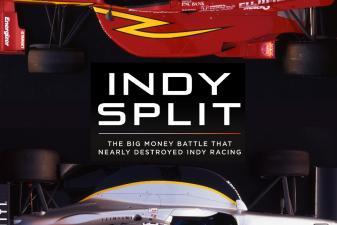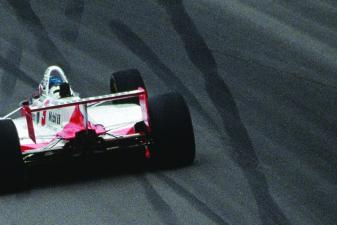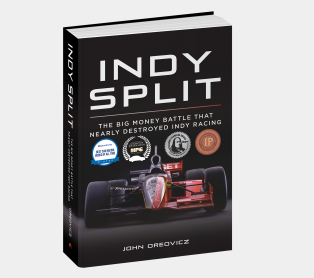Indy Split: Invading Hallowed Ground


Indy Split is a fascinating, authoritative and overdue account of the big money battle that nearly destroyed the sport of Indy car racing. The book traces the roots of Indy car racing’s dysfunction, which began in 1945 when Tony Hulman rescued the Indianapolis Motor Speedway from potential redevelopment. In this post, read about the first appearance of NASCAR at Indy. Photo by Dan R. Boyd.
In September 1991, occasional NASCAR competitor A.J. Foyt brought one of his stock cars to the Indianapolis Motor Speedway to film a television commercial for Craftsman Tools. Foyt’s godson, IMS President Tony George, who casually raced throughout the ’80s, stopped by and hopped into the car to run a few laps of the Hulman family racetrack.
This occurred just a few weeks before the Houston meeting where the CART board rejected George’s proposal to reorganize the governance of Indy car racing, and it may have been the final inducement he needed to approach his family about going against tradition by expanding the Speedway’s annual schedule to include an additional marquee event alongside the Indianapolis 500. Adding a NASCAR race was a risky move; on one hand, if the event were to prove successful, it could be a significant moneymaker for the Speedway and the Hulman-George family. A healthy NASCAR event could also serve as a bargaining tool (and cash generator) for IMS if the Speedway’s relationship with CART continued to deteriorate. However, Indy’s reputation was built on the 500, and the danger existed that a NASCAR race at IMS could potentially anger the Indy car fan base and devalue the 500 and/or the month of May.
An exploratory first step toward the diversification of IMS came June 22-23, 1992 when nine NASCAR Winston Cup Series teams conducted an “acclimatization test” for Goodyear. The likes of Dale Earnhardt, Bill Elliott, Davey Allison, and Ernie Irvan lapped the 2.5-mile oval at 167 miles per hour, some 60 miles per hour slower than the Indy cars of the era. But that didn’t deter around fifty thousand spectators from shelling out five-dollar admission over the course of the two days to experience the novelty of NASCAR at Indy.
“Last December, my family decided to pursue some possible opportunities and investigate the possibilities of having another event here,” George remarked. “I’ve received a lot of mail and people want another race. And anybody that’s a race fan knows that NASCAR puts on a good show.”
Though respectful in deference to the traditions of the Indianapolis 500, the NASCAR set could barely contain its glee at the prospect of invading Indy car racing’s hallowed home turf. “From NASCAR’s standpoint, it would be a neat deal to run here someday,” said NASCAR CEO Bill France Jr. “The cars looked good out there, they sounded good, the fans liked them and the drivers liked the track. To my knowledge we haven’t seen any negatives.”




